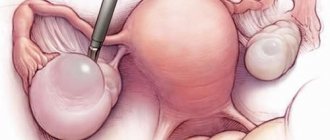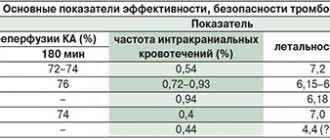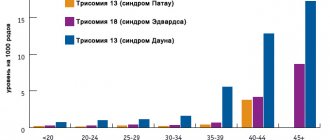Ehlers-Danlos syndrome (according to some sources, Ehlers-Danlos syndrome, EDS) is a rare hereditary collagen pathology that affects the skin, musculoskeletal system and other organs. Other names for the syndrome are “skin hyperelasticity”, cutis hyperelastica, Rusakov desmogenesis imperfecta and Chernogubov-Ehlers-Danlos syndrome. People with this syndrome could be seen in the circus in the past because of their ability to surprise ordinary people with their appearance and movements. Some famous people also suffered from this disease - for example, virtuoso violinist Niccolo Paganini.
History of the discovery of the syndrome
People with this disease were described by Hippocrates in 400 BC. e. in the essay “Airs, Waters and Places” (De aere, aquis, locis). He observed nomads and Scythians with weak joints and multiple scars around them. Hippocrates believed that the scars were traces of cauterization, with the help of which they tried to reduce joint hypermobility. Much later, in 1657, the Dutch surgeon J. Van Meekeren (1611–1666) described a small Spaniard with very elastic skin. A boy named George Albs could stretch the skin of his chin to his chest, and the skin of his knees to the middle of his shins, but this only affected the right half of his body. World-famous violinist and composer Niccolo Paganini (1782–1840) had hypermobile joints, a thin physique, and a deformed chest—all symptoms characteristic of a carrier of Ehlers-Danlos syndrome. At the end of the 19th century, some patients with EDS performed as people with unusual abilities in traveling shows, such as the “elastic lady” described by American doctors George M. Gould and Walter L. Pyle. For a long time, the diversity of clinical manifestations of the syndrome did not allow a detailed description of all forms of the disease.
Managing legacy state
As EDS is a hereditary disease, many people are affected by worrying about their family and whether they will experience this syndrome too. Recently, it has become possible to perform genetic screening for all forms of EDS, with the exception of the hypermobility type, and a visit to a geneticist or genetic counselor may be able to further assist families wishing to obtain more detailed information. These visits will often involve giving a medical history as well as childhood milestones, demonstrating any hypermobile joints, examining any scars, giving a blood sample, and sometimes a small skin biopsy. Seeking help from a professional often allows families to gain a clearer understanding of possible problems and risks, and also helps them plan more effectively for potential eventualities.
Privacy & Cookie Policy Contact
© Ehlers-Danlossyndrome - ehlers-danlossyndrome.org
Classification and name
The first detailed description of EDS was presented by the Russian doctor at the Myasnitskaya Hospital in Moscow, Andrei Chernogubov, at the Moscow Venereological and Dermatological Society in 1892. He described two patients with increased mobility of large joints. One of them was a 17-year-old boy with epilepsy who had fragile and hyperelastic skin that was unable to hold sutures.
Later, in 1901, Danish dermatologist Edvard Lauritz Ehlers published a description of a patient with weak joints and hyperelastic skin, with a predisposition to bruising. He demonstrated it at the Danish Dermatological Society in 1899. Seven years later, French physician Henri-Alexandre Danlos examined a patient with vascular skin lesions on the elbows and knees. Afterwards, separate descriptions of this syndrome appeared in both the USA and England, and by 1966 the total number of reports had increased to 300. In 1936, the English dermatologist Frederick Parkes Weber combined all cases with hyperelasticity and fragility of the skin, as well as hypermobility joints. He called the new disease “Ehlers-Danlos syndrome.”
In 1972, the first molecular defect in collagen was discovered in EDS. In 1986, at the International Congress on Hereditary Connective Tissue Diseases in Berlin, 9 types of Ehlers-Danlos syndrome were identified, but in 1997, in Villefranche-sur-Mer (France), experts developed and adopted a more precise classification. It already had 6 types of EDMS:
- classical;
- hypermobile;
- vascular;
- kyphoscoliotic;
- achondroplasyplastic;
- dermatosparaxis.
Diagnosis criteria
This classification not only systematizes the forms of the syndrome, but also identifies major and minor criteria for diagnosing Ehlers-Danlos syndrome, which is why it is often called the Villefranche diagnostic criteria.
Major diagnostic criteria:
- Thin translucent skin with a visible venous pattern.
- Predisposition to vascular, intestinal and uterine ruptures or weakness of these structures.
- Easy bruising and bleeding.
- Characteristic facial features: wide-set eyes, depressed middle part and epicanthus fold at the inner corner of the eye, covering the lacrimal tubercle
Some minor diagnostic criteria:
- Premature aging of the limbs (acrogeria - atrophy of the skin of the hands and feet).
- Hypermobility of small joints (interphalangeal and metacarpophalangeal joints of the hand).
- Rupture of tendons and muscles.
- Clubfoot.
- Pneumothorax/pneumothorax.
- Retraction (sagging) of the gums, their underdevelopment.
- Complicated family history, sudden death of close relatives.
Two or more major criteria allow one to suspect EDS; laboratory confirmation is required for clarification. If only small criteria exist, then this is not an EDS - there must be at least one large criterion.
Diagnostic methods
The syndrome is diagnosed in several ways. First of all, the doctor collects anamnesis and genealogical data.
Next, a thorough physical examination of the patient will be required, during which a specialist examines the condition of the skeleton and skin, since the main symptoms appear there.
diagnostic methods may also be required
- skin biopsy (to determine the state of collagen in the skin),
- conducting molecular genetic research,
- Ultrasound of internal organs,
- echocardiogram,
- examination by an ophthalmologist.
Hypermobile EDMS
It is inherited in an autosomal dominant manner and is associated with the type 3 collagen gene COL3A1. Occurs in one person per 10,000–15,000 population. The dominant symptom is increased mobility of large and small joints, accompanied by pain. Dislocations and subluxations can occur spontaneously or due to minor injuries. Symptoms occur regardless of age, but in children with Ehlers-Danlos syndrome it is more difficult to diagnose due to the physiological weakness of the ligamentous apparatus of the joints. Patients with this type of EDS are also characterized by early development of osteoporosis (almost immediately after 30 years). This type of EDS is also characterized by functional disorders of the large intestine, hypermobility of the esophagus, gastroesophageal reflux and gastritis.
Ehlers-Danlos Syndrome - Types
There are several types of the disease:
- Classic – characterized by loose joints and laxity of the skin. Often, patients develop scoliosis in childhood. The joints are unstable and easily deformed. The disease is inherited, the type of transmission of the pathology is autosomal dominant;
- Hypermobility – the most characteristic symptom is joint hypermobility. The type of inheritance is autosomal dominant;
- Vascular - among the signs of the disease, vascular fragility, manifested by spontaneous ruptures of arteries, comes to the fore. This leads to frequent internal bleeding, which can be life-threatening for the patient;
- Kyphoscoliosis – this form of the disease is most characterized by the appearance of a spinal deformity called scoliosis. Changes in the eyeball are also often observed;
- Arthroclasia - patients with this form of the disease experience short stature and increased joint mobility;
- Dermatospraxis - characterized by a peculiar appearance of the skin, which becomes flaccid and sagging.
Vascular EDS
Develops with an autosomal dominant defect in the COL3A1 gene, which is involved in the synthesis of type III collagen. It is less common than the previous two types - one in 250,000 people. This type is characterized by a high risk of profuse bleeding from internal organs and ruptures of blood vessels. A patient with the vascular type of EDS has thin skin with vessels visible through it. It is precisely because of problems with blood vessels that such patients rarely live past 50 years. The appearance of a patient with the vascular type of EDS can be very characteristic - the face looks emaciated with prominent cheekbones and sunken cheeks, the nose and lips are thin. At the same time, there is no pronounced hyperelasticity of the skin.
The remaining types are much less common than the previous three - there are about 100 cases worldwide. The achondroplasisplastic type of EDS develops due to a defect in type 1 collagen. About 30 cases have been reported. Already at birth, children with Ehlers-Danlos syndrome are diagnosed with hip dislocation; patients suffer from early arthritis, frequent bruising of the skin and its increased elasticity, as well as atrophic scars. Dermatosparaxis - only 10 cases of EDS of this type have been registered in the world. Patients have extremely fragile skin with a soft, loose texture that is prone to bruising easily. Very early on, patients begin to experience chronic debilitating pain in the joints and muscles. Hyperelasticity of the skin manifests itself to varying degrees, but there is no atrophy of scars.
Prognosis for patients
There is no increased risk of early mortality, however, due to joint instability, chronic and acute pain, and symptoms outside the musculoskeletal system, the patient's quality of life is seriously impaired.
As mentioned above, there is no special treatment. It is necessary to undergo individualized auxiliary and symptomatic treatment methods, including physical therapy, rehabilitation, analgesics and appropriate therapy for extra-articular symptoms. Surgical measures should be considered judiciously.
Treatment and prognosis
Patients with EDS are observed throughout their lives by various specialists - therapists, geneticists, orthopedists, physiotherapists, exercise therapy specialists, neurologists, cardiologists, etc., depending on the clinical symptoms. There is no specific treatment. Early diagnosis of Ehlers-Danlos syndrome in children allows one to make a prognosis, select the necessary lifestyle for the patient and reduce the number of complications associated with the underlying disease. Most people with this diagnosis can live relatively normal and long lives. The main condition is to reduce injuries while maintaining sufficient physical activity for the development of the muscular frame. In addition, regular preventive examinations and treatment by a dentist and ophthalmologist are necessary.
Sources
- Federal clinical guidelines for the diagnosis and treatment of Ehlers-Danlos syndrome. Rumyantsev A. G., Maschan A. A., Zhukovskaya E. V. - 2016
- Ehlers-Danlos syndrome—a historical review Liakat A. Parapia and Carolyn Jackson Department of Haematology, Bradford Teaching Hospitals NHS Foundation Trust, and University of Bradford, Bradford, UK.
- Vascular type of Ehlers-Danlos syndrome. M. V. Gubanova, L. A. Dobrynina, L. A. Kalashnikov. — Volume 10. — No. 4–2016. Annals of Neurology.
- Ehlers-Danlos syndrome in a 6-year-old child. E. F. Argunova, O. N. Ivanova, E. E. Gurinova, S. N. Alekseeva. Pacific Medical Journal. - 2014. - No. 2.
Prevention
In order to prevent complications and due to the increased risk of injury, patients should avoid contact sports, as well as those that involve a high load on the joints (running, football, etc.), exercises with weights and stretching. In addition, they should be guided by the choice of a profession that does not involve constant stress on the spine and legs, as well as physical activity.
To protect and stabilize joints, do not forget to use bandages, orthoses, special finger rings, and use elbow pads, knee pads and a helmet when playing sports.
In order to reduce the risk of vascular rupture, blood pressure levels should be regularly monitored. It is also necessary to visit an ophthalmologist annually to assess the degree of myopia and be able to promptly identify glaucoma or retinal detachment. When planning a pregnancy, a mandatory consultation with a geneticist is indicated.
Severe pain and instability in the leg joints is a direct indication for using a wheelchair.










